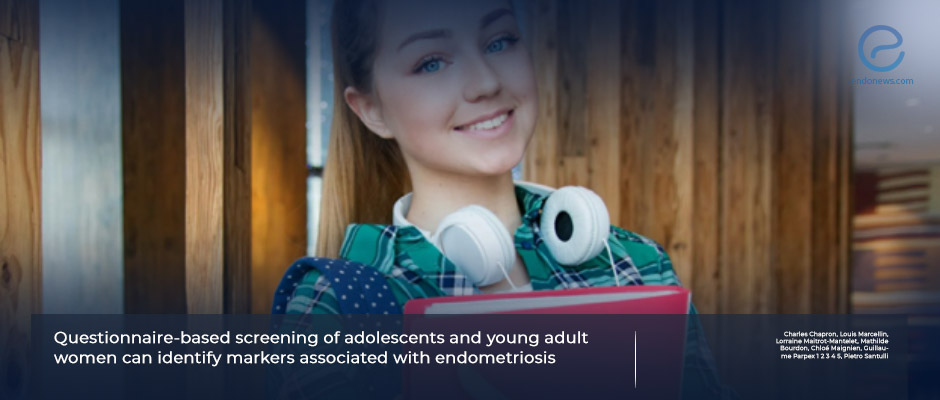Endometriosis May Be Identified Using a Standardized Questionnaire
Sep 4, 2024
It may be possible to identify endometriosis in adolescents and young adult women using a standardized questionnaire combined with clinical examination and imaging techniques.
Key Points
Highlights:
- Identifying endometriosis among adolescents and young adult women non-invasively may be possible using a standardized questionnaire.
Importance:
- This approach can ensure the disease is diagnosed and treatment initiated earlier.
What’s done here:
- An observational cross-sectional study using prospectively recorded data was used to understand whether adolescents and young adult women with endometriosis present a specific clinical history.
- Researchers analyzed 262 adolescents and young adult women with and without endometriosis; 118 had endometriosis while 144 were symptomatic without evidence of endometriosis.
Key results:
- A family history of endometriosis, missing school during periods, a history of fainting spells during periods, and a prescription of oral contraceptive pills for intense period pain were significantly more frequent in adolescents and young adult women with endometriosis.
- The prevalence and mean pain scores for period pain, deep pain during intercourse, non-cyclic chronic pelvic pain, gastrointestinal and lower urinary tract symptoms, and rectal bleeding were significantly greater in adolescents and young adult women with endometriosis.
Limitations:
- The study was conducted in a single referral center, which treats women with potentially more severe disease.
- The questionnaire was evaluated on a population of patients with an indication for endometriosis surgery, i.e. those with more severe disease.
- Women with asymptomatic endometriosis were not included in the study.
Lay Summary
Screening adolescents and young adult women with a questionnaire can identify clinical symptoms associated with histologically proven endometriosis, according to a new study published in the scientific journal Human Reproduction.
“Combined with imaging and clinical examination, this approach will enable earlier diagnosis and treatment, while remaining non-invasive and rapid,” the authors of the study said.
The authors conducted an observational cross-sectional study using prospectively recorded data from January 2005 to January 2020. They aimed to understand whether adolescents and young adult women with endometriosis presented a specific clinical history.
Participants who had a thorough surgical examination and were diagnosed with endometriosis based on histological analysis and participants showing symptoms of the disease but no endometriosis were asked to complete a standardized questionnaire. The researchers analyzed a total of 262 adolescents and young adult women. Of these, 77 were aged 20 or younger while 185 were aged 21 to 24. Of these 262 participants, 118 had endometriosis while 144 were symptomatic without evidence of endometriosis.
The results showed that a family history of endometriosis, missing school during periods, a history of fainting spells during periods, and prescription of oral contraceptive pills for intense period pain were significantly more frequently observed in patients with histologically confirmed endometriosis compared to the others.
Furthermore, the prevalence and mean pain scores for period pain, deep pain during intercourse, non-cyclic chronic pelvic pain, gastrointestinal and lower urinary tract symptoms, and rectal bleeding were significantly greater in participants with endometriosis compared to the others.
“Patient interviews are relevant to the diagnosis of endometriosis in adolescents and [young adult women],” the researchers concluded.
Research Source: https://pubmed.ncbi.nlm.nih.gov/38901867/
questionnaire adolescent endometriosis diagnosis

